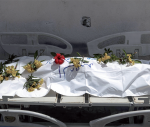You are here
A ‘Jan Steen’ household
Jul 05,2015 - Last updated at Jul 05,2015
In the second Abbasid Caliphate, the Arab world was subjected to many unsettling events and earth-shaking upheavals. It was during this era, that sciences and creativity recorded the highest achievements, while security and peace hit a deep low.
The caliph was practically devoid of executive powers; either the harem or the military generals held the keys of authority.
Failure to service the people led to one revolt after other in the far corners of the vast empire before they eventually broke out in the capital Baghdad or in other opulent cities.
New dynasties emerged everywhere, and the Abbasid domain was virtually broken into many autonomous provinces or even semi-independent city states.
Very unwieldy and extremist movements emerged. All of them, without exception, resorted to violence and adopted mystical ideologies.
Most notable among these were the Assassins (Al Hashasheen) who obtained the obedience of their followers either by keeping them under the influence of drugs or by promising sexual orgies.
Another was the Qaramitah, a movement that started as a farmers’ revolt against the exploitation of feudal lords and overtaxation by local governments and ended in nihilistic urban terrorist movements and public ownership of everything, including wives.
That situation provides a close analogy to today’s Arab world.
We see terrorist movements adopting similar ideologies that spread through savagery and a promise of mundane and celestial heavens of unlimited pleasure to those who follow them.
The Arab system that in 1945 hoped to reach full unity though the Arab League can hardly keep states from breaking into smaller sectarian mini-states.
It reminds me of the paintings of a Dutch master, Jan Steen, in whose works there are many people, each doing something that hardly relates to others.
Each is fully involved in his narrow, two-dimensional world and completely detached. The only thing in common for the humans and animals depicted is the space they occupy.
Inspired by the terrible beauty embodied in them, the Dutch refer to an untidy and dysfunctional household as a “Jan Steen household” or, sometimes, “Jan Steen kitchen”.
Can the situation in our part of the world stay like this for a long time?
From the looks of it, it could.
Such conclusion is based on many facts and experiences. First and foremost is the fact that none of the Arab problems or disputes, especially when they turn violent, is resolved within a reasonable period. They linger and become protracted.
Second, the great powers do not see much threat to their interests by the Arab state of affairs. The only manifestation that causes them concern is the homegrown “Jihadists”.
Third, the war against Daesh and other extremist groups is not going anywhere, nor is it achieving tangible results that can be counted on to last.
This is the military dimension that was supposed to be the shortest phase. The other two phases, of security and ideology, are predicted to last much larger.
Reaching the abyss may provide some hope that things have nowhere to go but up; yet, whenever we reach an abyss, we discover that there are more below.
Jordan can hope for a distinguished position in this messy Arab world. But we do not want to be the only ones roaming the vast debris-filled terrain the day after.
This is a sad loneliness, but we may have to live with it for a long time to come.
The writer, a former Royal Court chief and deputy prime minister, is a member of Senate. He contributed this article to The Jordan Times.













